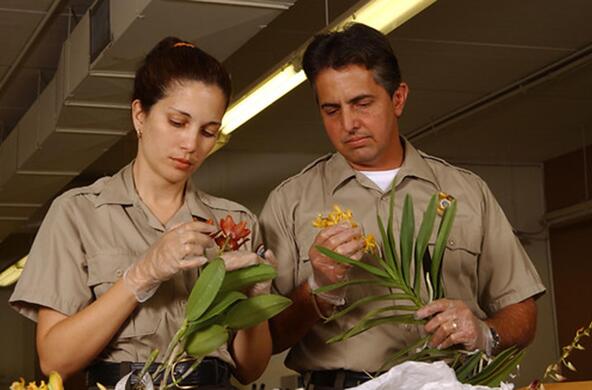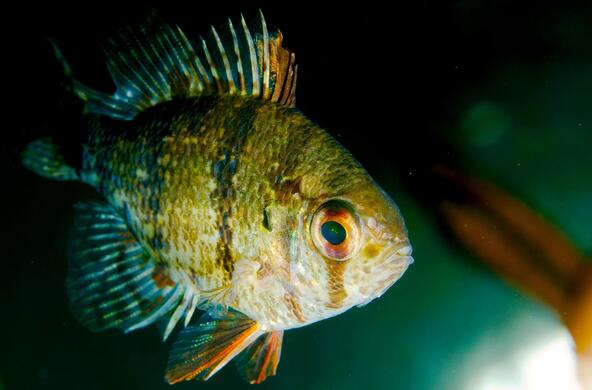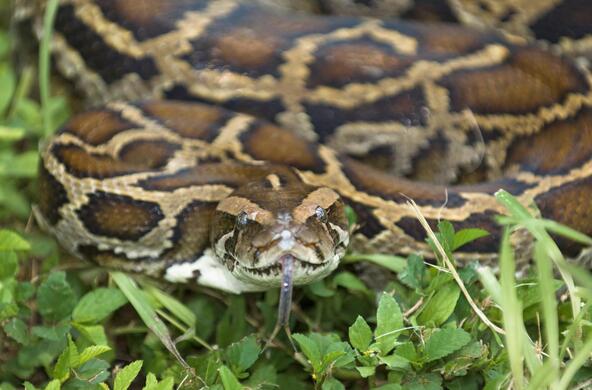If you want to see plants and animals from around the world, you don’t have to go to the zoo or botanical garden — just visit the Hudson River. When you get out of your car, you see common reed (phragmites), false-indigo and purple loosestrife growing along the edges of the parking lot. A mute swan glides by a big bed of water-chestnut along the shore and anglers are catching largemouth bass and channel catfish. Carp splash in the shallows, and if you pick up a rock at the water’s edge, you’ll see zebra mussels and faucet snails. And these are only a few of the dozens of species from other parts of the world that now make their homes in the Hudson.
How did all these species get here? Many, such as the water-chestnut, carp and mute swan, were brought here deliberately by people who thought that these species would improve our lives. It turns out we aren’t very good at telling which of these “beneficial” species are going to turn out to be trouble. For instance, one of the men who brought us the water-chestnut wrote, “but that so fine a plant as this, with its handsome leafy rosettes and edible nuts, which would, if common, be as attractive to boys as hickory nuts now are, can ever become a nuisance, I can scarcely believe.” (I know about a thousand boaters and ecologists who would like to travel back to the 19th century to talk some sense into this guy.)
Other species weren’t intentionally released into the wild, but got into the Hudson through careless human activities. Zebra mussels came to North America in untreated ballast water, rudd (a big minnow) and rusty crayfish probably were spread by releases from bait buckets, and oriental weatherfish and Chinese mystery snails came in when people got tired of their aquariums and dumped them into local ponds and streams. Plants such as purple loosestrife and common reed escaped from gardens, or came as contaminants of agricultural seeds or solid ballast.
An activity of special relevance to the Hudson was the linking of the Hudson with Lakes Erie and Champlain through canals. These canals have no provisions to block the movement of species, so animals like the freshwater drum came through canals into the Hudson.
What all of these activities had in common is that the people engaged in them gave little or no thought to the ecological and economic consequences of moving species into the Hudson. They thought that they were just bringing us a valuable plant or animal, or being kind to an animal in a bait bucket or aquarium, or allowing wheat to be shipped from the Genesee Valley to New York City. Instead, they permanently added species to our landscape, with ecological or economic effects that may last for centuries.
And what effects have these species had on the Hudson? People often emphasize the negative effects of non-native species, and indeed many of the Hudson’s invaders caused serious problems. Zebra mussels foul pipes and boat hulls and divert food from species like shad. Water-chestnut crowds out the native wild-celery, and prevents boaters, anglers, and swimmers from using coves and bays along the Hudson.
On the other hand, some of the invaders are beneficial, or at least have some beneficial effects. Nonnative largemouth and smallmouth bass are among the fish most sought out by anglers in the Hudson, and invasive plants such as common reed and water-chestnut help prevent nutrient pollution.
Finally, many or most of the nonnative species in the Hudson are so rare that they probably have little or no ecological or economic effects, either positive or negative. In aggregate, though, nonnative species have caused large, long-lasting changes to the river. Many of these changes are negative, and none of them were carefully considered when the species were brought in.
This cavalier attitude towards species invasions was perhaps excusable in the 19th century, when people didn’t appreciate the value of the Hudson River ecosystem or the long-term consequences of species invasions. It seems unworthy of us today. We know what careless activities are bringing new species into the Hudson, and we know how to reduce the number of species that these activities bring in. It would be nice if our grandchildren had to go to the zoo — not down to the river — to see the next generation of damaging invasive species.






